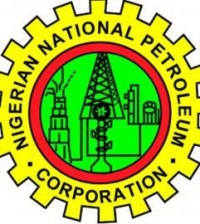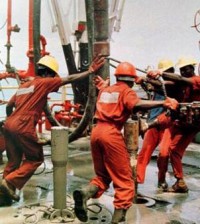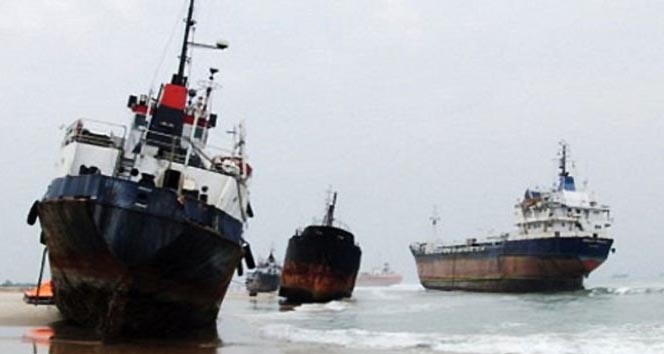Nigeria’s Gas Revolution And The Trinidadian Model
THE Federal Government of Nigeria is provoking multiple revolutions through gas, the alternative revenue earner to crude oil.
This comes on the heels of the $10bn MOU signed on March 24, 2011 by the Nigeria National Petroleum Corporation (NNPC) and representatives of some foreign investors, Xenel of Saudi Arabi, Nagarjuna of India and Chevron Nigeria Limited.
Two other companies, Oando Nigeria Plc and Agip Petroleum have been awarded contracts for the development of the anchor Central Processing Facility (CPF) to be located in Obiafu, Rivers State and Warri, Delta State.
Nigeria patterns after the Trinidadian model, which infuses full local content participation in their Gas operations. When, eventually, Nigeria goes full-scale on implementation of the Gas Master Plan, there would be over 2,000km of pipes to be laid. At the point of execution, the major question will be how will Nigerian companies and Nigerians benefit from the big Pipe-laying Pie? The Federal Government, according to inside sources, has decided to adopt the Local Content Strategy of the Trinidadians in the Trinidad’s model of Gas Master Plan.
Trinidad has the least gas in the world but has monetised it the most. Over 100 years experience in oil and bitumen and 50 years with gas. The monetisation of Gas has led to what is called the Trinidad model. Trinidad is the highest supplier of LNG to the US, highest producer of methanol and Ammonia in the world. The country generates 99 per cent its electricity by Gas. Trinidad evidently has all the experience required to assist Nigeria to fire her Gas Master Plan and wire the country and the world with her Gas Revolution.
Dr. Williams Wallace is the Honorary Consul General of Antigua and Barbuda to Nigeria. Chairman, Trinidadian Oil and Gas (TLOG), Wallace is responsible for bringing the Trinidadian Gas Model to the Nigeria Gas Master plan. He is in Nigeria to assist with the formulation and implementation of ideas and processes that will effectively propel the Nigeria Gas Revolution.
He said the synergy between Trinidad and Nigeria in terms of oil and gas is very poignant. Geologically, Trinidad and Nigeria share the same geology. “So the bitumen deposit that Nigeria has is very similar to that of Trinidad. What is very important is the Local Content aspect.” According to him, the founding father and first Prime Minister of Trinidad, Dr. Eric Williams, said: “It would have been easy for Trinidad to sell its patrimony and earn revenue and the whole nation would be on the dole. “But he decided that in a country of 1.3million people, Trinidad has a lot more to gain from not selling our patrimony and deciding that even though we are not technologically competent, we were going to go towards monetizing our resources and upping the technology.” The TLOG Chairman said the Local content aspect was to ensure that Trinidadians, not foreigners, runs any energy company in Trinidad and Tobago.
“Does this mean Trinidadians control the commanding heights of the industry now? Yes we do. Every bit of it. What is more important…we told the IOCs ‘we own the gas, you don’t own the gas you flare it. So you don’t have a gas producing License, you have an oil mining Lease. So we will take the gas.’ when they refused, it was kept and they brought them to the table to release the gas.” Today, Trinidadians control the transportation of the gas “so they cannot tell you that this is what they transmitted from their production. That is the key. We made sure that from the time you bring the gas onshore, the distribution, transportation system remains with Trinidad government national gas company. That is the midstream. Those are some of the lessons we have to share with Nigerians regarding the Nigeria Gas Master Plan.”
His company, TLOG, had taken former President Olusegun Obasanjo to Trinidad to see the Trinidadian Gas Local Content reality.” It was what Obasanjo saw that made him direct the relevant agencies to work with TLOG to ensure Nigeria adopts the Trinidadian Gas Model.
Williams said the vision statement of the company is
to establish Trinidad and Tobago as a major player in the global natural gas business and the company’s mission statement
To maximise value from our business transactions for the benefit of Trinidad and Tobago by leveraging our competencies and unleashing our entrepreneurial spirit.
Established in 1975 and wholly owned by the Government of the Republic of Trinidad and Tobago (GoRTT), The National Gas Company of Trinidad and Tobago Limited (NGC) is a diversified natural gas company. NGC is one of the largest companies in Trinidad and Tobago, with consolidated sales that accounted for approximately 4.3 per cent of Trinidad and Tobago’s Gross Domestic Product (GDP) in 2006.
The Trinidadian Gas company’s core business activity is the purchase, transport and sale of natural gas to the local downstream natural gas-based industries (excluding the liquefied natural gas, or LNG, industry). It markets the natural gas purchased by the company primarily to local petrochemical producers of ammonia and methanol, power generation facilities and iron ore reduction facilities, which accounted for approximately 73 per cent, 17 per cent and 5 per, respectively, of our total sales volume in 2006.
The T&T NGC is involved, through its investment in Phoenix Park Gas Processors Limited, or PPGPL, in the processing of natural gas for the removal of natural gas liquids, or NGLs, and the fractionation, or separation, of NGLs into NGL products such as propane, butane and natural gasoline for export to markets in North America, South America, Central America and the Caribbean.
In addition, through the T&T NGC investment in Atlantic LNG Company of Trinidad and Tobago, or Atlantic LNG, it is involved in the production of LNG. The NGC also provide tariff-based transmission services to shippers of natural gas that supply Train 4 of Atlantic LNG.
The Trinidadian Gas company own and operate a natural gas transmission and distribution network of approximately 760 km comprised of both offshore and onshore pipelines, with a current overall maximum installed transportation capacity of 3,800 MMscf/d. it is nearing completion of the Beachfield Upstream Development (BUD) pipeline, which, together with the acquisition of the Dolphin to Beachfield pipeline for BGTT, will expand our transportation capacity to 4,800 MMscf/d in the second half of 2007.
One of the company’s activities is the promotion and facilitation of investment in the local natural gas sector.
This role is carried out by one of its subsidiaries, National Energy Corporation of Trinidad and Tobago Limited, which also provides industrial sites and supporting infrastructure, including marine and port facilities.
Dr. Wallace also informed that recently the Government created the Local Content Chamber to further advance the Carribean countries gas revolution. It is hoped that the Nigerian Content Development and Monitoring Board (NCDMB) under the leadership of Engr. Ernest Nwapa will link up with the newly created Trinidadian chamber to seek ways of exchanging ideas as they prepares to play a critical role in Nigeria’s Gas revolution.
Source : Guardian








